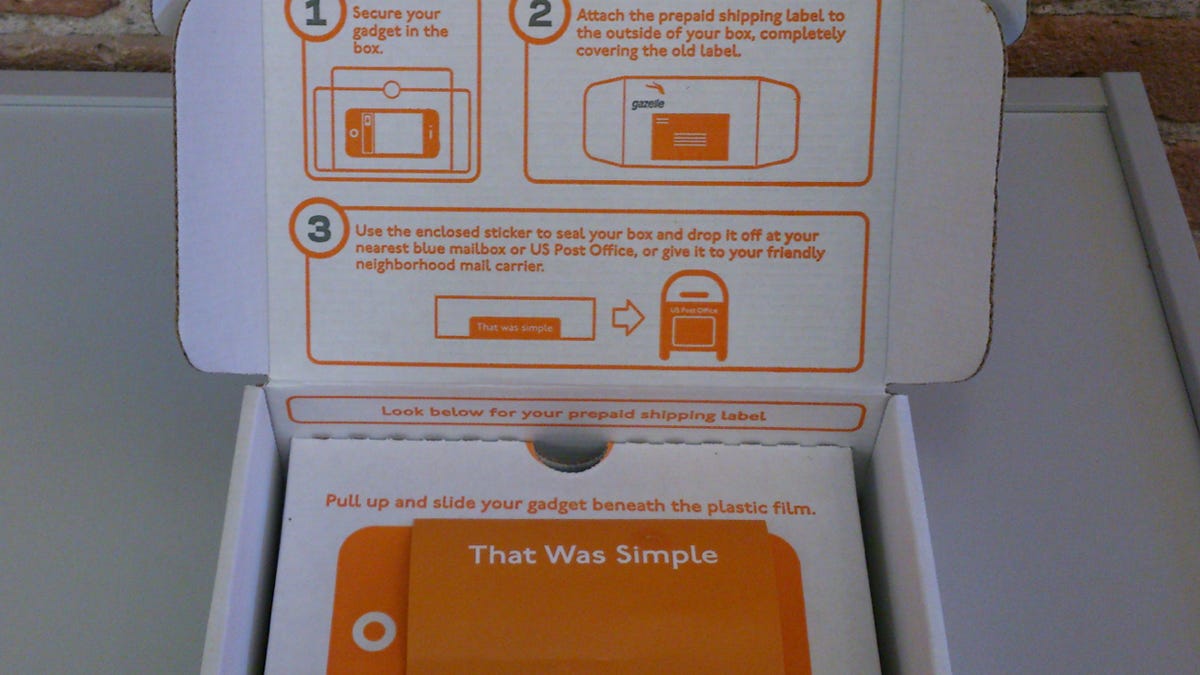In search of the perfect, diaper-free gadget trade-in box
After people began sending gadgets in MacGyver-like packaging concoctions, buyback service Gazelle tried to make the perfect box.
Shortly after its rebranding in 2008, year-old gadget trade-in service Gazelle had a problem.
People were sending in diapers.
Not used diapers, of course. But after agreeing to send the company their old smartphone in return for cash, some customers were eschewing typical pack,aging materials in favor of whatever was in their house. As it turned out, this could be spare diapers, worn-out shoes and even pillows.
Why was this happening? The service, which buys used gadgets then sells them off to third-parties, was giving customers U.S. Postal Service shipping boxes and an envelope. People took one look at that and imagined that their expensive smartphone would make it to the company's Texas-based processing warehouse in pieces.
From a logistical standpoint, this added more time and waste on Gazelle's end, where the company was tasked with opening up the packages and inspecting the gadgets to establish what they're worth. And perhaps more important, there was also the threat of someone deciding it wasn't worth the risk, and canceling a trade-in deal entirely.
Both were enough of an issue that the company decided to begin developing its own boxes. And more than 100 versions later, the company thinks it has a winner.
That strategy bears similarity to tech pioneer Netflix, which initially made a name for itself with its DVD by mail delivery service. When Netflix started out, it used cardboard and, at one point, plastic to ferry discs back and forth between homes and its distribution centers. About seven years later, after numerous designs, it settled on a thin, reenforced paper envelope with a window that would show a disc sleeve's barcode, a design that was patented four years ago and remains in use today.
Unfortunately for Gazelle, the company is not in the disc business, and a one-size-fits-all approach has proven to be more difficult. People send in things like iPhones, Android devices, and BlackBerrys. The company has also branched out into tablets and computers.
To solve that variety problem, the company decided to design its own specialty boxes for products it buys used from consumers. In an interview, Gazelle's Anthony Scarsella said this was effectively a single employee who has been tasked with making a universal box that's small, tough, and that can work with several devices, but that's not bulky or overly complicated.
The company's current box is the latest such effort to fit into those categories, Scarsella says. It employs a plastic film to keep gadgets in place, along with a loose pre-paid label that gets stuck back to the outside of the box, and a branded piece of adhesive that seals everything back up. A Netflix envelope it's not, but the goal is similar: the company wants to wow people with packaging that's iconic, but that also does its job.
Along with the box for phones, the company also has an entire case dedicated to iPads, which Gazelle says will get its own overhaul soon. That's especially important given that the tablet has more, potentially vulnerable glass, and can carry a higher price tag than what people pay for a subsidized smartphone.
The changes come amid what trade-in companies hope will be a very busy year as more people continue to buy, and eventually re-sell, their smartphones and tablets. Gazelle, which bought its 1 millionth device (a Samsung Galaxy S2) back in September, says the number of offers it doled out for people's gadgets grew by 70 percent during 2012, and that the U.S. has much more room to grow.
"We're still a bit behind the U.K., where more than 21 percent of consumers trade-in their old smartphone, but the idea of reusing devices is not so foreign to many anymore," Scarsella said in the company's annual report.
Even with that expected growth, Scarsella says the company intends to continue relying on mail over any sort of presence at retail stores, making its return boxes one of the few ways the company can make the entire transaction memorable -- or at least diaper-free.


